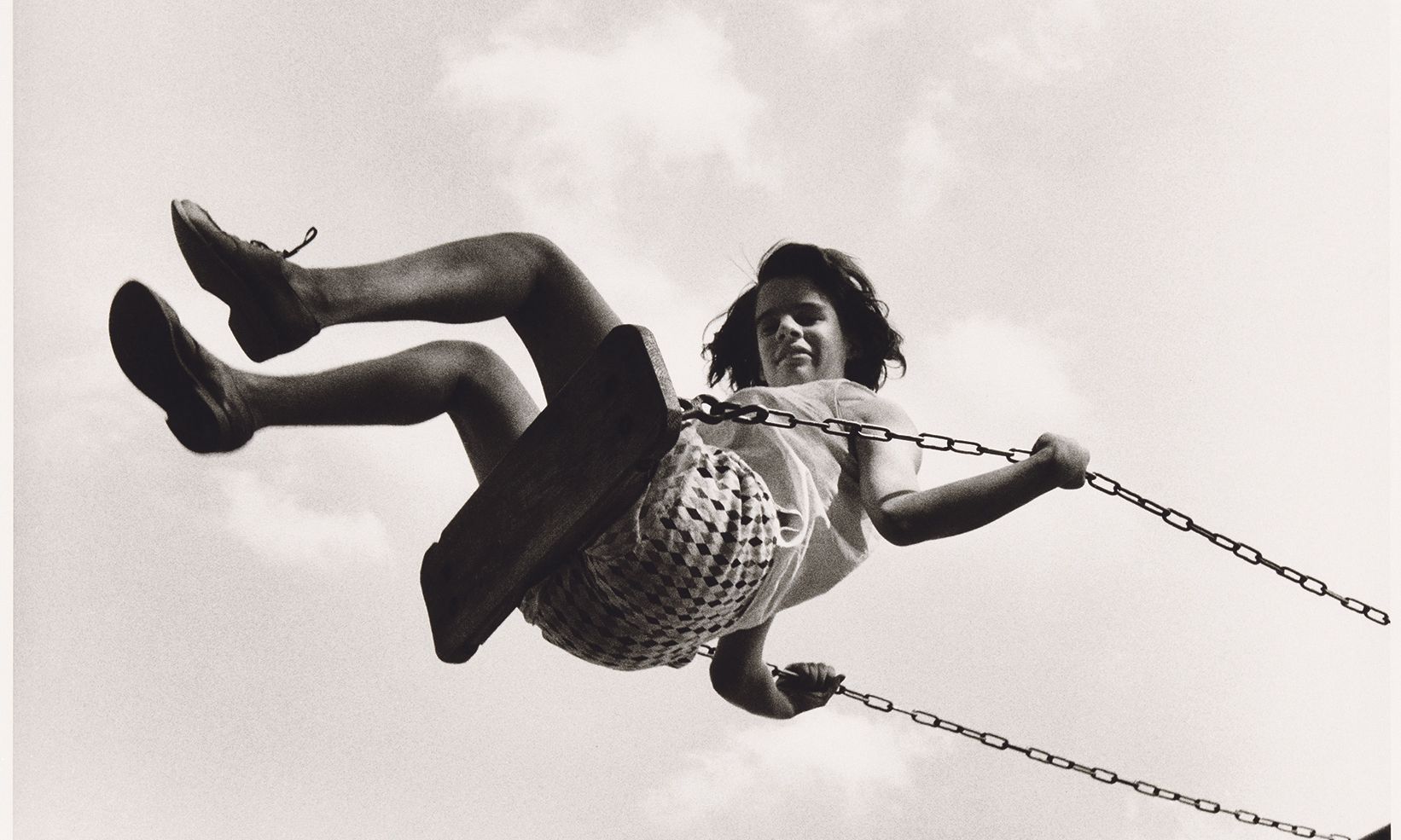Different direction: the Ukrainian Museum’s show concentrates on Peter Hujar’s work up to 1969 and features images the artist created depicting children with disabilities, including Girl on Swing, Southbury (1957) Courtesy of The Ukrainian Museum, New York; © The Peter Hujar Archive—Artists Rights Society (ARS), NY
This exhibition presents three little-known groups of early works by the Ukrainian American photographer Peter Hujar (1934-87), and pays homage to his famous images of the queer avant-garde counterculture of the 1970s and 1980s in the Lower East Side, where the Ukrainian Museum now stands. Hujar was raised by his Ukrainian grandmother on a farm in New Jersey, speaking only Ukrainian until he started school, and the exhibition reflects his struggle to find his identity, says Peter Doroshenko, the museum’s director and curator of the exhibition.
“People have always known he had Ukrainian heritage,” Doroshenko tells The Art Newspaper. “He didn’t talk about it that much. With some friends he did; with others he didn’t. It was that battle of trying to figure out identity. And his was even more complex, because he was dealing with a gay identity at a time when it wasn’t completely apropos to be gay.”
The “Rialto” of the exhibition’s title refers to the Lower East Side’s Yiddish Theatre District, which still existed when Hujar lived in the neighbourhood. He lived in one of the old Jewish theatres; The Saint, a gay club known as the “Vatican of disco” and frequented by Andy Warhol and the theatre director Robert Wilson, was across the street.
Creating a context
“These are the things I wanted to describe to create a context for Hujar,” Doroshenko says. “He was literally going across the street to Veselka”—the neighbourhood’s landmark Ukrainian restaurant. “He was talking to the cooks in Ukrainian. It was all part of a bigger cultural phenomenon.”
The focus of the exhibition is Hujar’s work up to 1969. As part of his research, Doroshenko spoke with the photographer’s surviving friends and consulted materials in his archive, which is overseen by Hujar’s friend Stephen Koch. Doroshenko found photographs taken by Hujar at homes for disabled children in Southbury, Connecticut, and in Florence, Italy, which reveal Hujar’s ability to establish a unique rapport with his subjects. His photos of the skulls of the Capuchin Catacombs of Palermo, also featured in the exhibition, cast them as memento mori.
As Susan Sontag wrote in her introduction to Hujar’s book Portraits in Life and Death (1976), “Photographers, connoisseurs of beauty, are also—wittingly or unwittingly—the recording-angels of death.” (Peter Hujar: Portraits in Life and Death, also organised by the Ukrainian Museum, is a collateral event of the Venice Biennale, until 24 November.)
• Peter Hujar: Rialto, Ukrainian Museum, until 1 September

